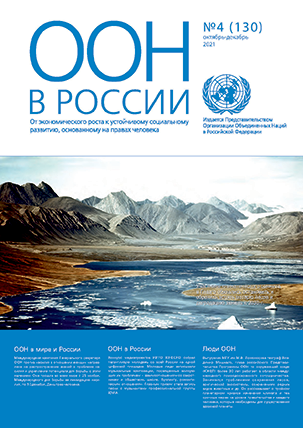Mothers and children need more – not less – social protection
As several countries around the world prepare to celebrate Mother’s Day, two new ILO studies provide new global and country data that point to the urgent need to increase social protection for mothers and children.
GENEVA (ILO News) – The lack of access to social protection (*) is still a reality for a large number of mothers and children worldwide, according to two studies released by the International Labour Organization (ILO).
The Social protection for maternity: Key policy trends and statistics report shows that only 36 per cent of employed women are legally entitled to cash benefits during their maternity leave. In practice, however, maternity leave legislation is not implemented effectively, so only 28 per cent of working women are covered in case of maternity.
The study, Social protection for children: key policy trends and statistics, also paints a worrying picture. It shows that while there has been an explosion of small cash transfer schemes in recent years, there is also a considerable gap with regard to the availability of adequate child and family benefits. According to the study, 108 countries have specific child and family benefit programmes rooted in legislation, but they often cover small groups.
“Around 800 women die from childbirth every day. In addition, 18,000 children also pass away daily. The sad reality is that despite efforts carried out as part of the Millennium Development Goals process, maternal and child mortality rates in developing countries are still very high,” says Isabel Ortiz, Director of the ILO Social Protection Department.
“Most of these deaths are preventable with adequate social protection. Universal maternal and child health care is key to reducing high mortality rates, together with cash transfers to ensure adequate food, clothing, and access to social services,” she adds.
Fiscal adjustment reducing social protection for mothers and children
A worrying trend is that in some countries the levels of maternity and child protection benefits have dropped as a result of fiscal consolidation policies.
For example, several European countries have reduced the level of maternity and child benefits or have limited the level of coverage.
“Fiscal consolidation and adjustment measures threaten progress on social protection for children and their families,” says Ortiz. “Child poverty increased in 18 of the 28 countries of the European Union between 2008 and 2013.”
Universal coverage: How much does it cost?
On the other hand, several low- and middle-income countries have either extended the duration of paid maternity leave or introduced cash benefits for mothers and children. However, large coverage gaps remain.
The reports look at a sample of 57 low- and lower middle-income countries and show that introducing a basic universal maternity cash benefit would require, on average, 0.41 per cent of national gross domestic product (GDP).
Meanwhile, having universal child benefits would, on average, require 1.9 per cent of national GDP. The projected costs for a basic universal child benefit vary greatly between countries, ranging from 5.2 per cent of GDP for Niger to 0.2 per cent of GDP for Guyana, considering that children constitute a large proportion of the population in these countries.
The same variation applies to basic universal maternity protection, where it ranges from less than 0.1 per cent of GDP in Bhutan, Guyana, India, Indonesia, Mongolia, Morocco, Sri Lanka and Viet Nam to 1.1 per cent of GDP in Niger.
“At a time when the world is discussing a post-2015 development agenda, it is essential that the international community identifies financing sources for social protection,” says Ortiz, recalling the ILO Social Protection Floors Recommendation, 2012 (No. 202) .
“It is a question of choosing the right priorities: the total cost of universal benefits to all pregnant women and all children in 57 lower income countries is just 0.6 per cent of what G20 countries used to bail out the financial sector in 2009,” concludes Ortiz.
The ILO Social Protection Floors Recommendation, 2012 (No. 202) reflects a consensus among governments and employers’ and workers’ organizations from 185 countries on the need to extend social security.
Both studies include detailed national data on maternity protection and child and family benefits for 188 countries surveyed.
* Social protection is defined by the ILO as the set of public measures that a society provides for its members to protect them against economic distress and hardship caused by the absence or a substantial reduction of income from work because of illness, maternity, lack of employment, disability, old age and others; access to health care; and the provision of benefits for families with children. This concept of social protection (or social security guarantees) aimed at reducing/preventing poverty and vulnerability is reflected in various ILO standards, approved by countries.

